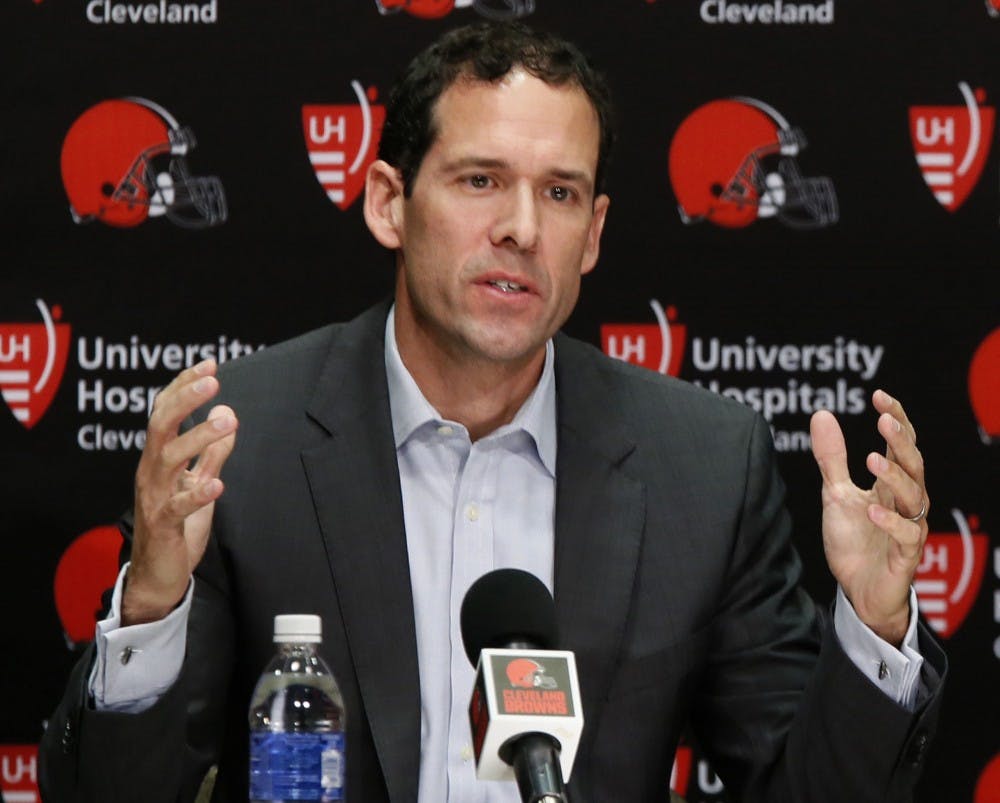The Cleveland Browns’ hiring of the New York Mets’ Vice President of Player Development and Scouting Paul DePodesta has been generally well-received by most major sports media outlets. His experience in using analytics to synthesize information about on-field performance in baseball has been well-documented; he was a central figure in Michael Lewis’ 2003 book "Moneyball," played by Jonah Hill in the film adaptation.
The real DePodesta played both football and baseball while attending Harvard University. His first job was with the Baltimore Stallions of the Canadian Football League. Soon after, he worked various advanced scouting and management positions in the MLB.
After the Mets’ loss in the World Series this past November, Browns’ owner Jimmy Haslam reached out to DePodesta about joining the team. Intrigued by the challenge, DePodesta eventually signed on as chief strategy officer.
As one can probably anticipate, the fans’ reception of the move was mostly negative. And can you blame them? The Browns have had only two winning seasons in the past 17 years, and just fired their third coach in four seasons. The team has looked largely inept for quite some time. And management thinks the answer is to hire someone who’s worked in baseball for 20 years?
The move reeks of desperation, and teams never want to give off that vibe to their fanbase, even if it’s well-founded. At this point, the team seems willing to think outside-the-box.
But there is a narrative that has been largely muted related with DePodesta’s crossover to the NFL.
Even if DePodesta turns out to be a failure, his hiring could usher in a new era for the NFL, one that begins to use sabermetrics in the way that baseball has for years.
And that would definitely be a good thing for the NFL.
Sabermetrics helped baseball understand what skill sets contribute the most to winning teams and how they're valued on the open market. In this way, the NFL is still in the dark ages.
One of the key realizations that helped to usher in the baseball sabermetrics revolution was that statistics that calculated the total outcomes of a player (such as the total number of hits accumulated over a season) were often misleading in terms of evaluating the actual talent level of a particular player. Per-play and rate statistics, such as on-base percentage, better contextualized a player’s individual performance, as one could see what a player brings to the table when adjusted for playing-time and opportunity.
In many ways, football’s major statistics are even more archaic than baseball’s pre-sabermetrics statistics were. The reality is that the majority of the NFL’s most-cited statistics — yards, sacks, tackles, interceptions — all paint a very simplistic picture of a player.
For example, if a cornerback accumulates two interceptions and 10 tackles over the course of the game, the narrative will be that he had a tremendous game. But what if that corner was thrown at 10 times, surrendering eight catches for over 100 yards, and the majority of his tackles came after long gains, a common occurrence for a member of the secondary? How would you rate his performance then?
What you need to properly evaluate this player’s performance is context: how talented was the opposing receiver he was covering on each snap? Was he primarily in man-to-man or zone coverage? Questions like these are what led to a revolution in baseball, and they need to be asked in football.
Luckily, these questions are now being asked in NFL circles, and “smarter” statistics are beginning to gain ground in the NFL. Websites like Pro Football Focus and Football Outsiders have come up with new statistics that better explain a player’s on field-performance, and measure players on a per-play basis. Even Sunday Night Football began to inundate PFF's stats into their broadcasts over the course of the 2015 season.
The more exposure these new statistics receive, the quicker they will become commonplace to everyday fans of the sport. The hiring of DePodesta may have been the most significant event thus far in the NFL’s evolution into the modern sports landscape, and his hiring may end up being the tipping point in mainstream acceptance of advanced stats in football.
At the end of the day, though, the only change Cleveland is hoping for is a winning Browns team. Here’s hoping that DePodesta can help them achieve that goal through the use of sabermetrics.
Reach the reporter at bfryan@asu.edu or on Twitter @brennanryan27
Like State Press Sports on Facebook and follow @statepresssport on Twitter.




